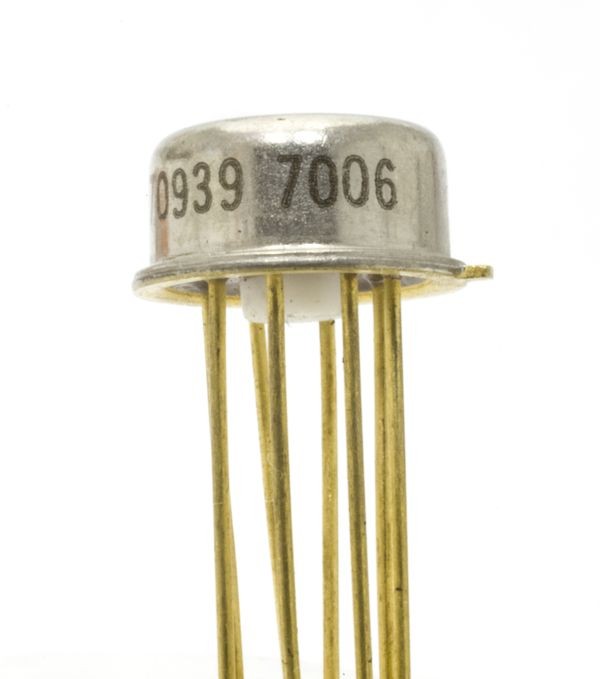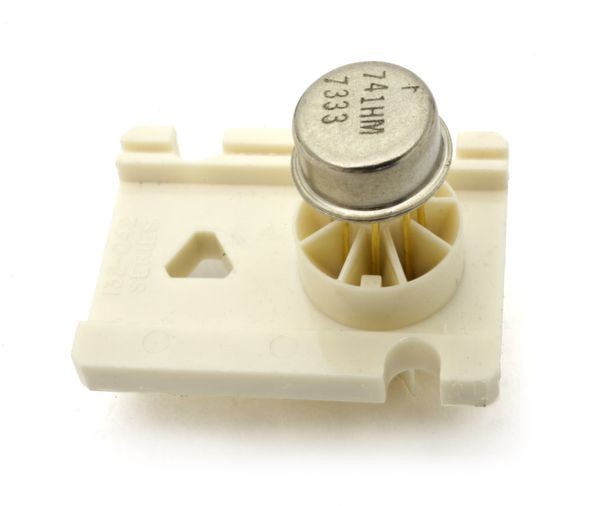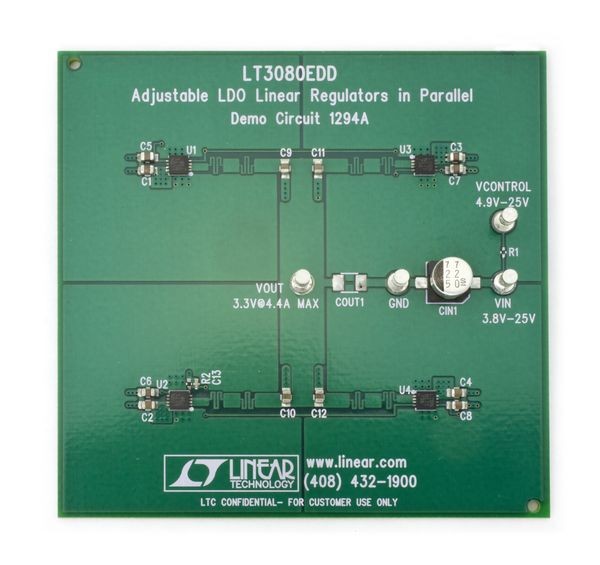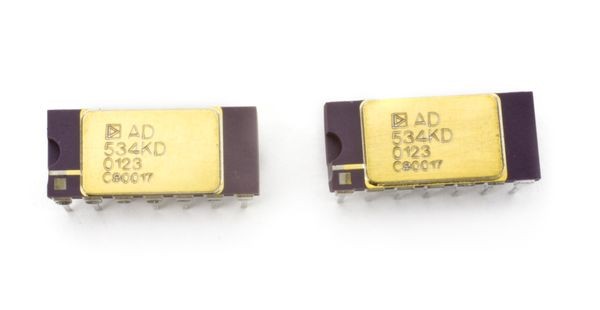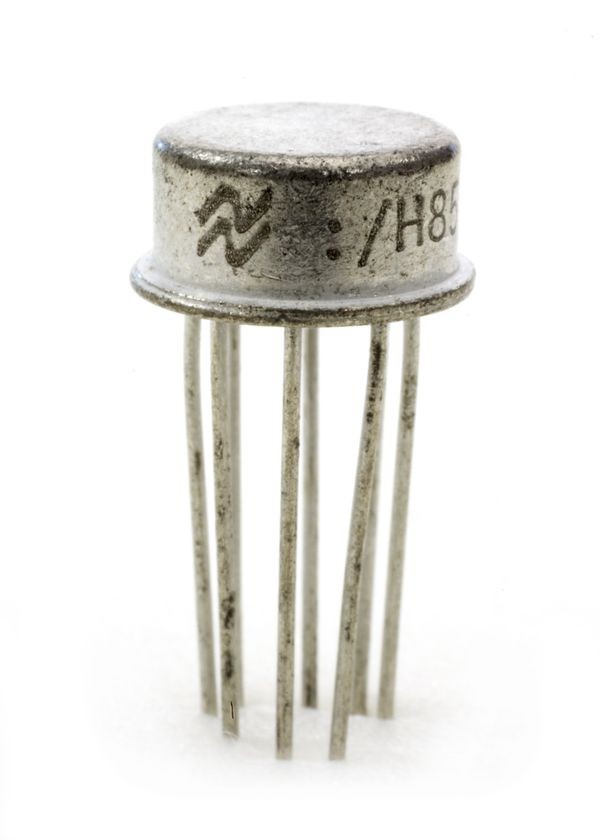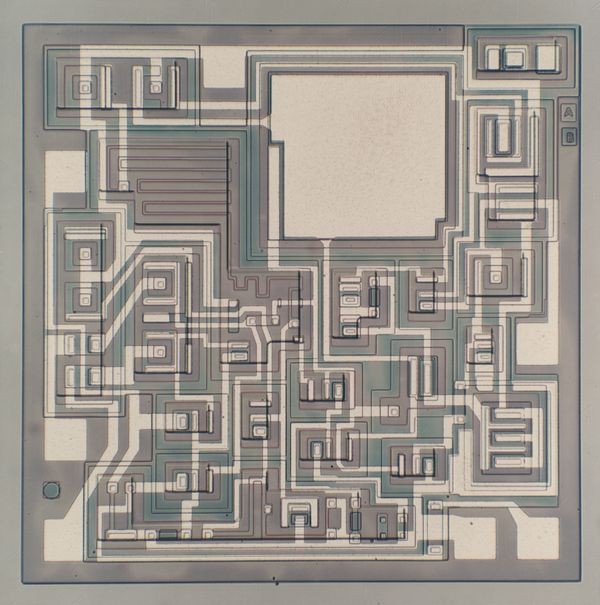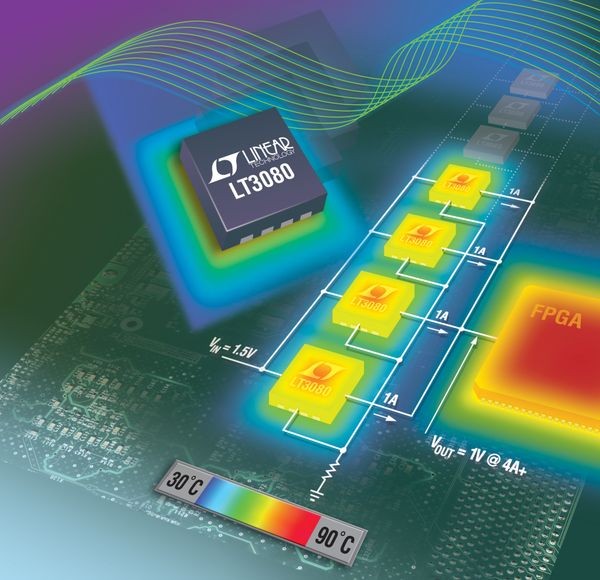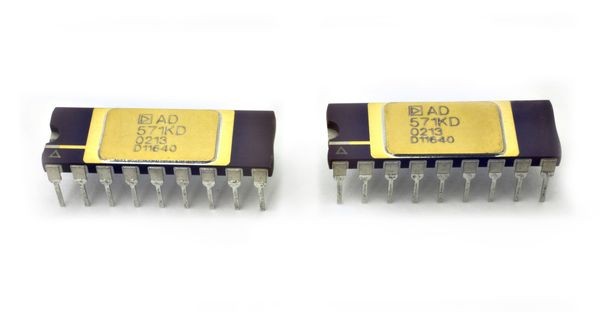Analog Integrated Circuits
µA709 operational amplifier, Fairchild, 1965
Designed by Robert Widlar.
Analog Integrated Circuits
Most modern computers are digital. But they function in a world of continuously varying analog input such as sound, light, and heat. So, they must convert these analog signals into digital ones and zeros for processing.
Every “digital” consumer product, from appliances and cell phones to music players, has analog ICs feeding its digital heart.
Analog ICs typically enjoy a far longer useful life than digital devices. While the circuit designs have been refined and the cost of the chips reduced as manufacturing processes improved, the basic functions of many analog devices continue to be useful in new electronic products after more than 40 years.
The Wizards of Analog
The precision demands of analog ICs nurtured a generation of highly skilled process and circuit engineers. Their creative solutions to overcome the limitations of available technology led to rock star-like celebrity among their peers.
Perhaps most famous of all was Robert Widlar, who teamed with process engineer Dave Talbert to kick-start the analog business in the 1960s with highly successful designs for Fairchild and National Semiconductor.
Widlar’s antics, including threatening to cut through bureaucracy with an axe, and buying a sheep to trim National’s unkempt lawns, remain Silicon Valley legends.
µA 709 Operational Amplifier, Fairchild, 1965
For the µA709 operational amplifier, Robert Widlar created a unique circuit design that was optimized for being made on a monolithic IC.
View Artifact DetailRobert Widlar, National Semiconductor
Robert Widlar shows the mask design of his LM10 operational amplifier.
View Artifact DetailNE555 Timer, Signetics, 1971
Hans Camenzind’s versatile 555 timer is one of the most popular and high-volume analog ICs ever made.
View Artifact DetailµA741 Operational Amplifier, Fairchild, 1968
David Fullagar’s improvement on Bob Widlar’s µA709 led to this most popular operational amplifier of all time.
View Artifact DetailLT3080 Three -Terminal Voltage Regulator, Linear Technology Corp., 2007
Robert Dobkin, a protégé of Bob Widlar, developed many miniature voltage regulators that play a critical role in compact electronic devices.
View Artifact DetailAD534, Four-Quadrant Precision Multiplier, Analog Devices, circa 1976
Adding analog values is easy; multiplying is not. Barrie Gilbert created this analog multiplier while working at Tektronix in 1967.
View Artifact DetailLM10 Operational Amplifier, 1976
Veteran analog designer Hans Camenzind observed that Widlar’s LM10 “is like a symphony with all the components playing in perfect harmony.”
View Artifact DetailLT3080 three terminal voltage regulator
An application of the miniature voltage regulator designed by Robert Dobkin.
View Artifact DetailAD571, 10-Bit Analog to Digital Converter, Analog Devices, 1978
Paul Brokaw designed the first monolithic 10-bit analog-to-digital converters (ADC), as well as other important analog devices.
View Artifact DetailRelated Content
Learn more about the development of analog ICs
The First Widely-Used Analog Integrated Circuit

